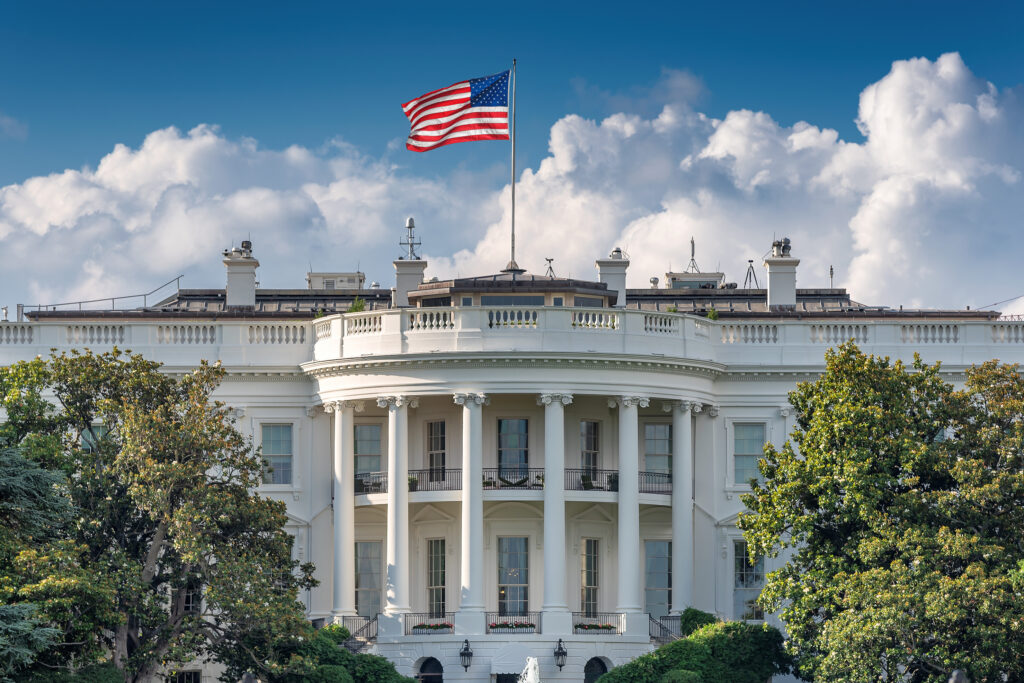President Donald J. Trump has returned to the White House for his second term. If there's one thing both sides of the aisle can agree on, it's that these first 100 days have been nothing short of eventful. From sweeping executive actions to headline-making legal challenges and legislative priorities, the early months of Trump 2.0 have marked a pivotal moment in American political and legal history.
Legal professionals must do their best to keep up with this rapidly evolving landscape.
Here are 10 key developments from President Trump's second term opening stretch...

1. Executive Orders Take Center Stage
President Trump signed a flurry of executive orders within his first days back in office, addressing issues such as energy policy, border enforcement, and federal agency oversight. So far, he has signed over 120 executive orders, surpassing the pace of previous administrations. These actions signal a return to many priorities from his first term, along with new directives aimed at swiftly reshaping executive branch policy.
2. Reshaping Immigration Policy
The administration reintroduced several immigration initiatives, including renewed efforts to expand border security and limit certain visa programs. This includes the reinstatement of the "Remain in Mexico" program and efforts to end birthright citizenship for children of undocumented immigrants. Legal challenges quickly followed in multiple jurisdictions, setting the stage for another round of high-stakes judicial review.
3. Shifts in Regulatory Enforcement
President Trump has emphasized deregulation, directing federal agencies to roll back various environmental and labor rules implemented during the prior administration. Attorneys practicing administrative, labor, and environmental law are watching closely as these rollbacks evolve—and as lawsuits begin to mount.
4. Changes in the Department of Justice
Under Attorney General Pamela Bondi, the Department of Justice has shifted its focus in areas such as election law, civil rights enforcement, and corporate compliance. These changes reflect a broader policy reorientation and raise important questions for legal practitioners about how enforcement will play out across federal jurisdictions.
5. Judicial Appointments Begin Anew
With several vacancies on the federal bench, the Trump administration has wasted no time in nominating judges who align with its judicial philosophy. These appointments will have a lasting impact on case law in areas ranging from administrative law to constitutional interpretation.

6. Executive Action on Reproductive Health Policy
A new executive order reinforced restrictions on federal funding for abortion-related services and reversed several guidance documents related to reproductive health. Legal scholars and healthcare attorneys are closely examining these moves, particularly in light of ongoing litigation and evolving state-federal dynamics.
7. Environmental Policy Realignment
The administration has moved to reopen energy development on federal lands and reassess climate-related regulations. These actions have sparked legal debates over environmental impact, agency authority, and public lands management—issues that will likely land in courtrooms soon.
8. Reassertion of Trade and Tariff Policy
Currently, President Trump's tariffs are taking center stage in the news. The administration has taken initial steps to renegotiate trade deals and reassess tariffs, signaling a continuation of the “America First” economic agenda. These actions may affect business, international law, and regulatory compliance across multiple sectors.
9. Heightened Activity in State-Federal Legal Disputes
Several states have already filed lawsuits challenging federal policy changes—particularly in the areas of healthcare, education, and environmental regulation. The legal tensions between state attorneys general and the federal government continue to shape the broader constitutional dialogue.
10. Legislative Outlook and Congressional Dynamics
While much of the early activity has come via executive action, the White House has also laid out legislative goals on tax reform, social media regulation, and national security. Legislative progress has been limited during these past few months. As of now, only a few bills have been signed into law, with many proposals still under consideration in Congress. How Congress responds—and how those proposals evolve into law—will be critical in the months ahead.



